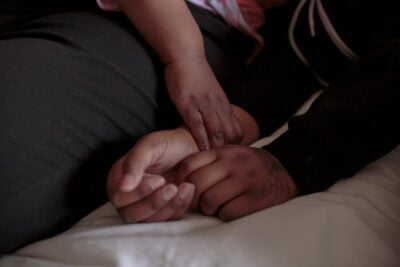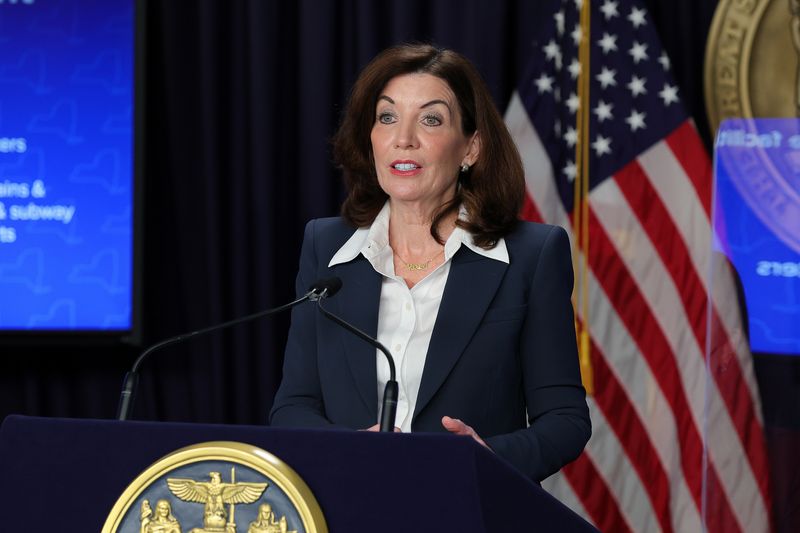
Series: Crisis Point
How New York Wrecked Mental Health Care for Kids
This article was produced for ProPublica’s Local Reporting Network in partnership with THE CITY. Sign up for Dispatches to get stories like this one as soon as they are published.
Mental health programs for children and adolescents will get a major infusion of funds in New York state’s new $220 billion budget, which passed Saturday after contentious negotiations over criminal justice issues.
Legislators approved significant reimbursement rate increases for community-based mental health programs, as well as bonuses for frontline workers. The budget also includes $10 million to address staffing and capacity shortages at state-run psychiatric hospitals, though it does not earmark funds to reopen beds that were shut down under a “Transformation Plan” rolled out by former Gov. Andrew Cuomo. A measure proposed by the state Senate that would have committed New York to restore 200 state-run beds died in budget negotiations.
As THE CITY and ProPublica reported in March, New York has closed nearly a third of state-run psychiatric hospital beds for kids since 2014. Children in mental health crisis sometimes wait months for admission to the remaining beds, our investigation found.
“Governor Hochul has made addressing mental health issues a major priority for her administration,” wrote Jim Urso, a spokesperson for the governor, in an emailed statement. “With this level of meaningful and targeted investment, we can get those struggling with mental health issues the help they need.”
Some lawmakers say the investments do not go far enough. "Kids are languishing in emergency rooms or in acute care hospitals, waiting for the state beds," said Assemblymember Aileen Gunther, who chairs the state Assembly's mental health committee.
“We were flush with money this year,” Gunther continued. “We spent it on ‘Let’s give some money to the Buffalo Bills stadium before we make sure that every child has access to mental health care.’”
In all, the new state budget for the fiscal year through March 31, 2023, allocates $4.7 billion in operating funds to the state Office of Mental Health — a bump of nearly $800 million from the previous fiscal year. Funding will go up for a wide range of programs that serve children and adolescents, including residential treatment programs, crisis intervention teams for kids experiencing mental health emergencies, programs that bring mental health care into kids’ homes and a statewide initiative to integrate mental health providers into pediatricians’ offices.
The new money is intended to fill deep holes. In February, Gov. Kathy Hochul echoed what mental health care providers and advocates have contended for years: “For too long our mental health care system suffered from disinvestment,” she said.
As a result, mental health programs face chronic staff shortages, and children often sit on long waitlists for basic treatment — a problem that started before the COVID-19 pandemic but only grew worse as demand for kids’ mental health care spiked, our investigation found.
In a major shift, the budget makes hundreds of thousands of kids newly eligible for services like in-home therapy and planned respite care. These programs have historically been available only to low-income children on Medicaid, but will now be expanded to the nearly 390,000 kids on Child Health Plus, which covers children and adolescents whose family incomes are too high for Medicaid or who aren’t eligible for Medicaid because of their immigration status.
In theory, the expansion of eligibility is a big win for kids, said Alice Bufkin, the associate executive director for policy and advocacy at the advocacy group Citizens’ Committee for Children of New York. But nonprofit mental health providers have struggled to serve the children who were already eligible, and they’ll need a lot more financial help to hire staff and serve additional kids, Bufkin said.
“We are at such a deficit in terms of capacity after years of underinvestment in the mental health system. We absolutely want to work with state leaders to build on these new investments and to recognize that there is a lot of work to be done to make sure kids can actually access the services they need,” Bufkin said.
“We’re on Life Support, and We Need to Be Resuscitated”
Like other health care providers, mental health programs in New York have faced critical shortages of staff during the pandemic. As THE CITY and ProPublica reported, state-run psychiatric hospitals are so short on nurses and social workers that many beds sit empty for months, even as acutely ill kids wait to get in.
Meanwhile, outpatient and community-based mental health programs — which struggled to stay fully staffed even before the pandemic — have seen an exodus of employees in the past two years. “We’re on life support, and we need to be resuscitated,” said Harvey Rosenthal, the CEO of the New York Association of Psychiatric Rehabilitation Services, at a New York State Assembly hearing on the mental health workforce in November.
That’s in large part because public and nonprofit providers can’t pay competitive salaries to clinical and other frontline staff, providers say. For many positions, community-based mental health organizations say they’re competing for employees with — and losing out to — fast food restaurants and retail outlets.
The new state budget attempts to stanch the bleeding, in part by doling out one-time bonuses to frontline health care workers, including mental health providers. Hochul proposed these spending measures as part of her plan to increase the size of the state’s health care workforce by 20% over five years.
“So to stop the hemorrhaging of health care workers,” Hochul said in her budget deal announcement Thursday, state officials need to stop talking about how “we owe them a debt of gratitude and pay them some of that debt. That means dedicating in this budget $1.2 billion for frontline health care worker bonuses.”
The budget also includes a measure, long sought by mental health agencies and advocates, that will provide a 5.4% cost-of-living adjustment in payments to service-providing agencies licensed by the state, including mental health and addiction programs. Under New York law, agencies that provide such services under contract with the state are supposed to receive a COLA every year, tied to inflation. However, the state budget has deferred the COLA nearly every year since the law was enacted in 2006 — a fact that has infuriated mental health advocates.
“For every year of his tenure, former Governor Cuomo robbed State-contracted human services workers of their mandated statutory COLA, depriving these workers of over $700 million in raises, and balancing the budget on the backs of low-wage workers and nonprofit community organizations,” the Human Services Council, which represents dozens of New York City nonprofits, wrote in January.
In response to a request for comment from Cuomo, Rich Azzopardi, a spokesperson for the former governor, sent the following statement: “Every budget is defined by the revenue you have and — if you intend to be fiscally responsible — reasonable growth that can account for future economic downturns and avoid fiscal cliffs. We never had bags of money from the federal government that enabled billions upon billions in new spending in an election year budget. I wonder what will happen once the Washington gravy train dries up?”
In her January budget proposal, Hochul said that the 5.4% COLA, which is primarily intended for employee recruitment and retention, would provide “immediate fiscal relief” to mental health providers, “enabling them to offer more competitive wages to their staff.”
Advocates say that the COLA and workforce bonuses are a great start, but it remains to be seen how big a dent they will make in the workforce crisis. “I know of an agency that has 270 job openings,” said Andrea Smyth, the president of the New York State Coalition for Children’s Behavior Health. “Right now, they post them and they get no one to apply. Does this amount of money get 270 people to apply — or does it get 15? That’s undetermined.”
Smyth added, “That said, this is more than we’ve gotten in decades.”
Some of the funding increases in the budget were made possible by an influx of federal COVID-19 relief money. An additional $111 million came from a financial maneuver that advocates say Cuomo could have made use of but didn’t. Under its Medicaid contracts, the state can claw back money from managed care insurance plans that fail to meet minimum spending requirements on mental health and addiction treatment for Medicaid recipients. In this year’s budget, the state will use two years’ worth of recouped money to fund increased reimbursement rates for mental health and addiction treatment clinics.
Advocates for community-based mental health providers hope the recouped funds signal an intention by the Hochul administration to increase oversight of managed care plans that participate in New York’s Medicaid program. “The state needs to step up surveillance, monitoring and enforcement of all the provisions that are in place to protect Medicaid beneficiaries and to guarantee access to care,” said Lauri Cole, executive director of the New York State Council for Community Behavioral Healthcare, which represents more than 100 mental health agencies.
“It’s about oversight of benefits that save people’s lives,” Cole added. “There should be nothing complicated about that.”





